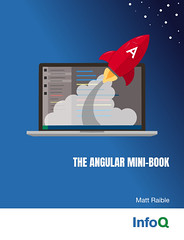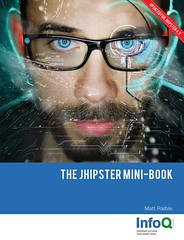AppFuse 2.0: JDK 5, Annotations and JSP 2.0
For the most part, I haven't used JDK 5 on any of my recent projects. You can compile and run AppFuse with JDK 5, but it doesn't use any JDK 5 features. After doing a code review at Bouvet last week and seeing how much cleaner their code is with Generics, Varargs and the Enhanced for Loop, I think it's time to dig in. I don't know how soon we'll start, but I think it's time to start creating a branch for AppFuse 2.0 - which will use these features. For AppFuse 2.0, I'd like to go whole hog, bleeding-edge and use all the stuff that's out there to make developer's lives easier. This includes JSP 2.0, Annotations (especially for Hibernate and Spring, as well as Tapestry) and all the JDK 5 features that seem useful.
Since most developers won't be able to deploy on a JDK 5-compliant server for quite some time, we'll continue to maintain the 1.x branch as JDK 1.4-compliant. I expect to release AppFuse 1.8.1 later this week (with mostly bug fixes + latest releases of Hibernate/Spring) and 1.9 in the next month or so. From there, we'll likely do 1.9.x releases with bug fixes and do all the major upgrades (i.e. Tapestry 4.0.x) in the new branch. Working with new features in JDK 5 should be a lot of fun.
I'm hopeful that we can get rid of XDoclet and we may even give Maven 2 a run for its money. Last week in Norway, I found that most Java developers were using Maven on their projects and I also discovered that many of the core Maven 2 developers are getting paid to work on it full time. There were even claims that Maven 2 is going to be twice as fast as Ant - which definitely intrigues me.
Later: I just realized the hardest part of this migration is going to be replacing AppGen. It currenly uses XDoclet templates for all the class templates - and we'll need a new solution based on annotations. Oh well, it's kind of ugly anyway, but it'll likely be difficult to figure out a new solution. Hopefully we can create some sort of tool that involves easy-to-customize templates and a GUI to drive it all.




 .
.